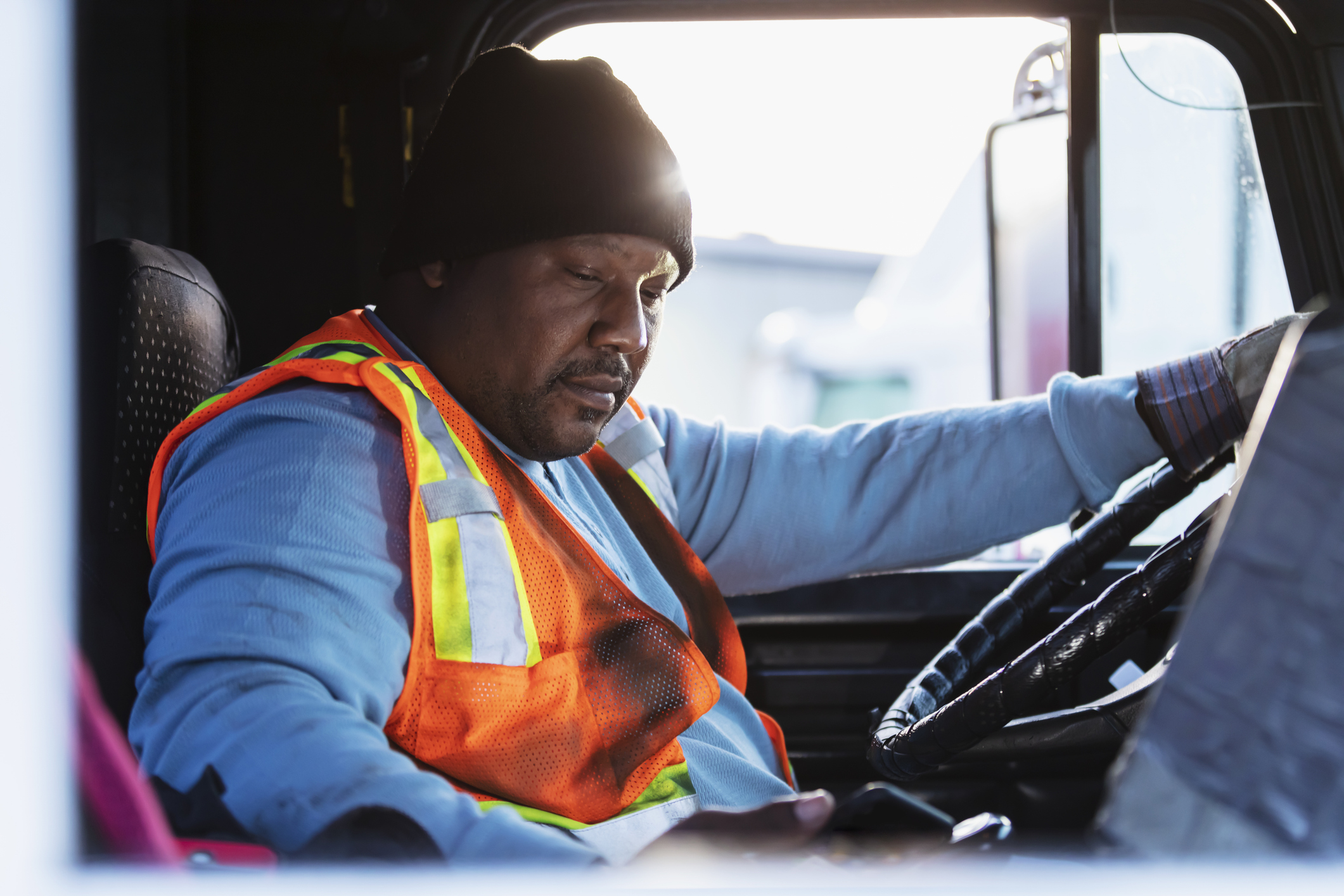Driving Change: The Pandemic’s Effects on the Trucking Industry

As we all reflect on the past year, the COVID-19 pandemic’s effects on the trucking industry are in-focus at WorkHound.
While many of the effects were challenging, some of the pandemic’s effects on the trucking industry have been positive — and that’s especially true for communication. During 2020 and the first part of 2021, the trucking industry has taken significant strides forward in several areas with a direct impact on drivers.
With an eye on keeping drivers safe, companies within the trucking industry have sped up the implementation of processes, programs, and technologies that improve the driver experience, both for now and in the future.
A Leap Forward in Communication
The pandemic has impacted virtually every industry. While we’ve been reminded over and over again that trucking is the essential backbone of our country, this also means that the industry has been forced to search high and low to find drivers to cover all the excess capacity.
To keep trucks on the road, companies have had to double-down on retention strategies, forcing them to pivot and make changes to their communication strategies, in addition to other overnight changes in the way their business operated.
“The pandemic has affected trucking in a lot of different ways,” says Max Farrell, CEO & Co-Founder at WorkHound. “In general, trucking is a dispersed industry. While most office environments became remote overnight, trucking had a head start. But where a lot of trucking companies needed an adjustment was learning how to manage their office staffs remotely and this forced them to adopt new communication styles.”
Communication between drivers and the in-house team is a point of emphasis — and an area of significant feedback — even in non-pandemic times. Its significance was magnified over the past year.
“While in-office communication had already-existing challenges, companies were required to overhaul a new solution to keep workers connected in order to keep business moving effectively,” Farrell says. “It wasn’t even a decision of whether or not they had to adapt, they just did it. What has traditionally been a very slow-to-adapt industry had to really quickly get up-to-speed and adopt technologies that allow them to stay in contact with drivers, customers, and staff.”
An Increased Emphasis on Driver Needs
Driver needs didn’t change much during the pandemic, but with the significance of the driver shortage and a limited pipeline of new drivers, their needs have been simply magnified. Much of the feedback drivers shared during the pandemic related to topics that are always top-of-mind. Take home time, for example:
“Home time has always been a priority for drivers,” Farrell says. “But since we began seeing feedback related to the pandemic, home time is an urgent and dire need. Drivers want to be with their family members when they’re needed, and they want to be home when they’re sick. Home time was the most urgent, critical need of 2020.”
Prioritizing time off the road for drivers — and communicating with drivers about how to claim that time — was a way for companies to get ahead of potential problems. And with the ability for drivers to make quick career-changing decisions, home time was of the utmost importance in benefit considerations in 2020.
Feedback related to compensation was also common during the pandemic, and for good reason.
“Hazard pay came up last year quite a bit,” Farrell says. “We saw companies develop programs that ensured drivers were compensated for the risk they were taking, or additional forms of compensation even when they weren’t able to be on the road.”
Innovative Ways to Train
Along with prioritizing drivers for the essential work they do, trucking companies have also evolved how they train drivers. Reduced in-person contact results in a reduced risk of COVID-19 transmission, allowing drivers to train effectively and get on the road quickly without the potential delays caused by illness.
That has led many companies to research and implement technologies that allow them to efficiently train employees remotely.
“We’ve seen carriers take extra precautions to prevent contact between drivers or office staff, including virtual onboarding and virtual training,” Farrell says. “Innovations from this time that support remote communications, training, and logistics, will be around for the long haul.”
What’s Ahead
For drivers, along with many of the rest of us, the COVID-19 vaccination is a topic of interest. Because categories for vaccination priority are determined on a state-by-state basis, when drivers can be vaccinated varies a great deal from person-to-person.
Naturally, drivers have many questions about vaccination. Effective communication can play a key role in helping drivers access vaccines quickly when first and second doses become available to them.
“Drivers want to know about the logistics of how getting vaccinated will work as it relates to their job,” Farrell says. “This concern is along the same lines of when they have a doctor’s appointment, except here, every driver has the same need at roughly the same time.”
For the sake of drivers, it’s important to map out the specifics of how drivers should obtain the necessary time off to get vaccinated, and share that information as early as possible.
“We have some carriers that are proactively communicating with drivers about what to do when they choose to get their vaccine,” Farrell says. “It’s all about creating a plan and then communicating with drivers about how to ask off for the time. Your company may even go further — some HR departments are communicating with drivers about how to apply and even where to look for vaccine appointments.”
Specific communications like this will show your drivers that you want to be as transparent as possible and that you view their safety and health as your top priority. We’ve seen time and time again that showing genuine concern and empathy for your drivers goes a long way in improving company loyalty and reducing turnover.
In that regard, the pandemic’s effects on the trucking industry have magnified already-existing challenges in a way that brings the power of a drivers’ viewpoint to the forefront.
Ready to tackle communication challenges head-on? Sign up for a free demo to learn how WorkHound can help!
Let's Build Better Workplaces Together
Revolutionize your company culture and your worker retention rates by improving communication and engagement.
Book a Demo

